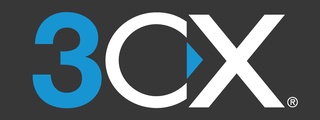Related Research Articles
The Digital Private Network Signalling System (DPNSS) is a network protocol used on digital trunk lines for connecting to PABX. It supports a defined set of inter-networking facilities.
The Intelligent Network (IN) is the standard network architecture specified in the ITU-T Q.1200 series recommendations. It is intended for fixed as well as mobile telecom networks. It allows operators to differentiate themselves by providing value-added services in addition to the standard telecom services such as PSTN, ISDN on fixed networks, and GSM services on mobile phones or other mobile devices.
A voicemail system is a computer-based system that allows users and subscribers to exchange personal voice messages; to select and deliver voice information; and to process transactions relating to individuals, organizations, products, and services, using an ordinary phone. The term is also used more broadly to denote any system of conveying a stored telecommunications voice messages, including using an answering machine. Most cell phone services offer voicemail as a basic feature; many corporate private branch exchanges include versatile internal voice-messaging services, and *98 vertical service code subscription is available to most individual and small business landline subscribers.
A telephone numbering plan is a type of numbering scheme used in telecommunication to assign telephone numbers to subscriber telephones or other telephony endpoints. Telephone numbers are the addresses of participants in a telephone network, reachable by a system of destination code routing. Telephone numbering plans are defined in each of the administrative regions of the public switched telephone network (PSTN) and in private telephone networks.

Asterisk is a software implementation of a private branch exchange (PBX). In conjunction with suitable telephony hardware interfaces and network applications, Asterisk is used to establish and control telephone calls between telecommunication endpoints, such as customary telephone sets, destinations on the public switched telephone network (PSTN), and devices or services on voice over Internet Protocol (VoIP) networks. Its name comes from the asterisk (*) symbol for a signal used in dual-tone multi-frequency (DTMF) dialing.

A business telephone system is a multiline telephone system typically used in business environments, encompassing systems ranging in technology from the key telephone system (KTS) to the private branch exchange (PBX).
Direct inward dialing (DID), also called direct dial-in (DDI) in Europe and Oceania, is a telecommunication service offered by telephone companies to subscribers who operate a private branch exchange (PBX) system. The feature provides service for multiple telephone numbers over one or more analog or digital physical circuits to the PBX, and transmits the dialed telephone number to the PBX so that a PBX extension is directly accessible for an outside caller, possibly by-passing an auto-attendant.

A VoIP phone or IP phone uses voice over IP technologies for placing and transmitting telephone calls over an IP network, such as the Internet. This is in contrast to a standard phone which uses the traditional public switched telephone network (PSTN).
Analog Display Services Interface (ADSI) is a telephony technology that is used in plain old telephone service (POTS) or computer-based private branch exchange (PBX) telephone service. It works in conjunction with a screen-based telephone ("screenphone") or other compatible customer-premises equipment (CPE) to provide the user with softkey access to telephone company or internal PBX custom calling features. It is an analog service because it uses analog frequency-shift keying (FSK) technology to interact with an LCD screen via short, low-baud rate, downloads to refresh and re-program softkeys in real-time.
In telephony, a message-waiting indicator (MWI) is a Telcordia Technologies term for an FSK-based telephone calling feature that illuminates an LED on selected telephones to notify a telephone user of waiting voicemail messages on most North American public telephone networks and PBXs.
The BT Versatility is a telephone PBX switchboard sold by BT and targeted at small businesses. It is manufactured by Taratel Communications previously Lake Communications in Ireland as the OfficeLink. In South Africa it was sold by Tellumat as the Convergence 30 or C30, in Australia it was sold as the Commander Connect, in the USA it was sold by Inter-tel as the Encore CX and by Mitel as the Mitel 3000
FreeSWITCH is a free and open-source application server for real-time communication, WebRTC, telecommunications, video and Voice over Internet Protocol (VoIP). Multiplatform, it runs on Linux, Windows, macOS and FreeBSD. It is used to build PBX systems, IVR services, videoconferencing with chat and screen sharing, wholesale least-cost routing, Session Border Controller (SBC) and embedded communication appliances. It has full support for encryption, ZRTP, DTLS, SIPS. It can act as a gateway between PSTN, SIP, WebRTC, and many other communication protocols. Its core library, libfreeswitch, can be embedded into other projects. It is licensed under the Mozilla Public License (MPL), a free software license.
Telephone numbers in Luxembourg employ a closed dialling system, whereby all numbers are dialed in the same format whether from within Luxembourg or from abroad. There is no trunk like "0".
An IP PBX is a system that connects telephone extensions to the public switched telephone network (PSTN) and provides internal communication for a business. An IP PBX is a PBX system with IP connectivity and may provide additional audio, video, or instant messaging communication utilizing the TCP/IP protocol stack.
Fixed–mobile convergence (FMC) is a change in telecommunications that removes differences between fixed and mobile networks.

Elastix is an unified communications server software that brings together IP PBX, email, IM, faxing and collaboration functionality. It has a Web interface and includes capabilities such as a call center software with predictive dialing.

Pbxnsip is a software implementation of a telephone private branch exchange (PBX) produced by a company of the same name. Like any PBX, it allows attached telephones to make calls to one another, and to connect to other telephone services including the public switched telephone network (PSTN) and Voice over Internet Protocol (VoIP) services. Its name is a combination of the acronyms PBX and SIP.
Aculab is a privately held, UK-based limited company that was founded in 1978. It is a designer, developer and manufacturer that specialises in providing API-driven, enabling technology sub-systems for telecommunications related OEM products such as are used in fixed line PSTN, wireless and VoIP networks. Aculab's products are sold worldwide, primarily through direct sales and also via the reseller channel. Aculab's headquarters and R&D facilities are located in Milton Keynes, UK. It has a branch office in Norwood, Massachusetts, USA.

The 3CXPhone System is the software-based private branch exchange (PBX) Phone system developed and marketed by the company, 3CX. The 3CX Phone System is based on the SIP standard and enables extensions to make calls via the public switched telephone network (PSTN) or via Voice over Internet Protocol (VoIP) services on premises, in the cloud, or via a cloud service owned and operated by the 3CX company. The 3CX Phone System is available for Windows, Linux, Raspberry Pi and supports standard SIP soft/hard phones, VoIP services, faxing, voice and web meetings, as well as traditional PSTN phone lines.